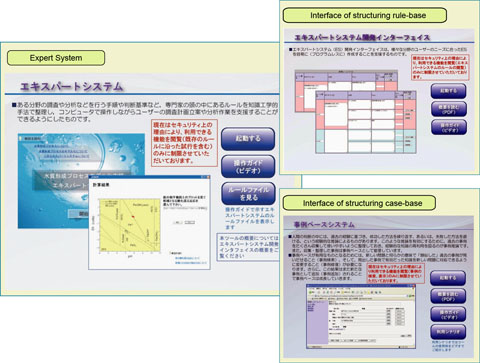
Fig.2-3 Examples of ISIS screenshots
When site characterization is performed in a stepwise manner, i.e., a literature survey followed by preliminary and detailed investigations, it is necessary to make full use of all the available knowledge accumulated through experience at underground laboratories. This knowledge consists of both explicit and implicit knowledge. Explicit knowledge includes databases, literature, and software, whereas implicit knowledge includes the experience and know-how of experts, which is called tacit knowledge. Traditionally, tacit knowledge was transferred from master to disciple or from father to son on the field site, in a limited manner. In order to transfer knowledge to many young engineers and future generations, it is necessary to externalize this implicit knowledge (such as decision-making rules and failure cases) as much as possible, and to update the externalized implicit knowledge continuously.
To this end, a method has been developed to externalize the knowledge of experts. Decision-making rules in the procedures of planning, investigation, and evaluation for site characterization are expressed as rules, i.e., in IF…THEN format. Another methodology, consisting of compiling a database of failure cases that are difficult to represent with rules, has also been developed using case-based reasoning technology. Geoscience experts who do not have expertise in information technology can input and revise the rules and cases using a user-friendly interface.
The expert system, which supports staff in the construction of geochemical models and so on, is to be developed with this methodology using rule-based and case-based reasoning (Fig.2-3). The Information Synthesis and Interpretation System (ISIS), which supports the implementer in planning, performing, and evaluating the preliminary investigation, will be developed through integration of each expert system.
This work was carried out under a contract with the Agency for Natural Resources and Energy, Ministry of Economy, Trade and Industry, in the fiscal years 2008 and 2009.
<Previous: 2 Research and Development on Geological Disposal of High-Level Radioactive Waste | Next: 2-2 >